Laser photocoagulation began i the early 1960s with Meyer-Schwickerath using the xenon arc laser.1,2 At that time, when surface neovascularization was directly treated with laser, regression of the neovascularization followed. Later, laser treatment was performed with the ruby laser and argon laser.3–5
The efficacy of laser photocoagulation was tested in several clinical trials. The two large randomized clinical trials were the British Multicentre Trial6 using xenon arc and an American study, the Diabetic Retinopathy Study (DRS).7–10 The National Eye Institute’s DRS used both xenon arc and argon blue-green lasers to show that photocoagulation was successful in the management of proliferative diabetic retinopathy (PDR).
DIABETIC RETINOPATHY STUDY
The DRS began in 1971 as a multicentered, national, and prospective clinical trial. Its goal was to answer the question whether photocoagulation would prevent the development of severe visual loss in eyes with PDR. Retinopathy was classified using the modified Airlie House classification.11 The Airlie House classification referred to a symposium held in 1968 discussing the current knowledge about the natural history and management of diabetic retinopathy (DR).12
The Airlie House classification included the seven standard photographic fields for DR.11 Field 1 was centered on the optic disc, Field 2 was centered on the macula, Field 3 was centered on the area just temporal to the macula, Field 4 was superotemporal, Field 5 was inferotemporal, Field 6 was superonasal, and Field 7 was inferonasal.
In the DRS, one eye was randomized to treatment with either xenon arc or argon laser photocoagulation. The other eye was randomized as a “control” eye, that is, without treatment.
The DRS asked three questions13,14:
Does photocoagulation prevent severe vision loss from DR? Severe visual loss was defined as visual acuity <5/200 at each of the two consecutive follow-up visits at 4-month intervals of the study.
Was there a difference in the efficacy and safety of extensive scatter and focal treatment to surface neovascularization elsewhere (NVE), elevated NVE, and neovascularization at the disc (NVD) with argon laser, extensive scatter, and focal treatment to surface NVE with xenon arc?
Which stages of retinopathy benefit most by treatment and for which stages might treatment be of no benefit or harmful? (Table 3-1)
TABLE 3-1 Definitions
| Mild to moderate nonproliferative retinopathy |
| Microaneurysms |
| Intraretinal hemorrhages: mild to moderate in fewer than four quadrants |
| Hard exudates |
| Macular edema |
| Foveal avascular zone abnormalities |
Moderate to severe nonproliferative retinopathy
|
| Severe nonproliferative retinopathy (ETDRS) |
Any one of the following:
|
| Very severe nonproliferative retinopathy (ETDRS) |
Any two of the following:
|
Proliferative diabetic retinopathy
|
The DRS identified four new vessel-vitreous hemorrhage risk factors or retinopathy risk factors:
- Presence of new vessels.
- Location of new vessels on or within 1 disc diameter (DD) of the optic disc or NVD.
- Severity of new vessels defined for NVD as equal to or greater than standard photograph 10A11 or greater than one-fourth to one-third disc area in extent, or for NVE, NVE equal to or greater than one-half disc area.
- Vitreous or preretinal hemorrhage.
Eyes with three or four retinopathy risk factors were considered to be at highest risk for the development of severe visual loss.
High-risk groups:
Eyes with NVD ≥ to ¼ to ⅓ DD (Fig. 3-1).
Milder NVD if associated with vitreous or preretinal hemorrhage (Fig. 3-2).
NVE ≥ to ½ disc area if associated with vitreous or preretinal hemorrhage (Fig. 3-3).

FIGURE 3-1. Disc neovascularization, standard photo 10A. (Courtesy of University of Wisconsin, Fundus Reading Center and Early Treatment Diabetic Retinopathy Study Research Group.)
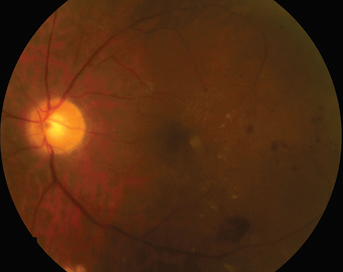
FIGURE 3-2. Retinal hemorrhages.
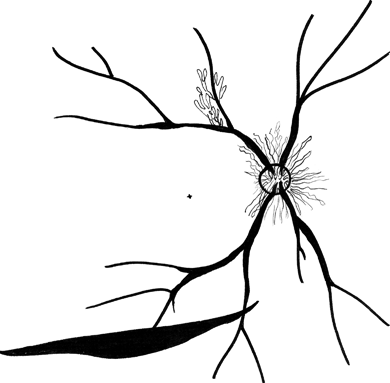
FIGURE 3-3. Neovascularization of the retina elsewhere and the optic disc neovascularization, meeting high-risk characteristics.
Thus, after 2 years of follow-up, photocoagulation was found to reduce the risk of severe visual loss by more than 50% in eyes with high-risk retinopathy.15 At 2 years, 11% of the treated eyes and 26% of the control eyes with high-risk retinopathy developed severe visual loss.15,16 At 4 years, 20% of the treated eyes and 44% of the control eyes developed severe visual loss. The clear treatment benefit was seen in longer follow-up.14,15 In eyes with less than high-risk retinopathy, or severe nonproliferative diabetic retinopathy (NPDR), the same clear treatment benefit was not seen. Thus, at the time, the DRS did not recommend prompt treatment for these categories of eyes.15,16
In the DRS, the side effects of photocoagulation were noted: a decrease in visual acuity and constriction of the peripheral visual field. This constriction of the visual field occurred more frequently with xenon arc than argon laser photocoagulation. The constriction of the visual field was thought to be from the macular edema that occurred as a treatment effect in the xenon-treated eyes.16,17
EARLY TREATMENT DIABETIC RETINOPATHY STUDY
The Early Treatment Diabetic Retinopathy Study (ETDRS) was a multicentered, collaborative, prospective, and randomized clinical trial sponsored by the National Eye Institute. Between 1980 and 1985, the ETDRS recruited and enrolled over 3,700 patients.
The ETDRS asked three questions:
1. Isphotocoagulation effective in the treatment of diabetic macular edema (DME)?
2. Is aspirin effective in changing the course of DR?
3. IsWhen should panretinal photocoagulation be initiated so as to be the most effective in the management of DR?18–24
Clinically significant macular edema (CSME) has been defined by the ETDRS as (a) thickening of the retina at or within 500 μm of the center of the macula, (b) hard exudates at or within 500 μm of the center of the macula, if associated with thickening of the adjacent retina and not residual hard exudates remaining after the disappearance of retinal thickening, or (c) a zone or zones of retinal thickening of one disc area or larger, any part of which is within 1 DD of the center of the macula.18,19
The diagnosis of CSME was made by using slit lamp biomicroscopy and documented with stereoscopic fundus photography. Fluorescein angiography was required by the ETDRS only after the clinical diagnosis was made by slit lamp biomicroscopy.
Of note, the definition of macular edema was first made by slit lamp biomicroscopy. Thus, fluorescein angiography leakage without clinical thickening did not fulfill the definition of CSME according to the ETDRS criteria.
ETDRS asked three questions and provided answers:
- Is photocoagulation effective in the treatment of macular edema?
Focal photocoagulation reduced the risk of visual loss by approximately 50% in eyes with CSME. Visual loss was defined as the doubling of the visual angle or the loss of three lines or more using the ETDRS eye charts. Eyes with clinically significant edema with the central vision affected showed the greatest treatment benefit. Eyes with macular edema except without the characteristics meeting clinical significance did not demonstrate the same treatment benefit. Lastly, eyes with CSME except without involvement of the center of the macula showed a beneficial treatment effect midway between the two previously mentioned groups.22
The greatest effect of this treatment was seen in eyes with visual acuity worse than 20/40. But all eyes demonstrated a favorable effect despite their visual acuity at entry. Although visual loss was significantly reduced, visual gain was minimal in those eyes with better than 20/40 vision at the onset of the study.
The goal of treatment was to “maintain” visual acuity to prevent worsening of visual acuity caused by untreated macular edema, especially if clinical slit lamp, stereoscopic, biomicroscopic examination confirmed that the center of the macular was involved. In these cases, the ETDRS recommended prompt treatment, regardless of visual acuity, since it was statistically likely that visual loss will occur without laser.
- Is aspirin beneficial to the treatment of DR?24,25
The ETDRS found that daily ingestion of 650 mg of aspirin had no demonstrable effects on the progression of DR in 8 years of follow-up.24 This aspirin study arm enrolled 3,711 patients with mild to severe nonproliferative or early PDR who were given 650 mg of aspirin or given placebo.
- When to initiate photocoagulation for DR?
In this part of the study, 3,711 patients with bilateral mild to severe nonproliferative or early proliferative retinopathy were enrolled. The eyes of these patients were classified into those with no macular edema, less severe retinopathy, and those with macular edema and more severe retinopathy (Table 3-2). One eye of each patient was randomized to early laser or deferral of treatment.21–24
TABLE 3-2 Classification of DR
ETDRS levels of diabetic retinopathy
Nonproliferative diabetic retinopathy (NPDR)
Mild NPDR
At least one microaneurysm
Moderate NPDR
Hemorrhages or microaneurysms (H/Ma)
Soft exudates, venous beading (VB), and IRMAs defi nitely present.
Severe NPDR
H/Ma in all 4 quadrants
VB in 2 or more quadrants
IRMA in at least 1 quadrant
Very Severe NPDR
Any two or more of severe (NPDR) (above)
Proliferative diabetic retinopathy (PDR)
Early PDR
New vessels on the retina
Or new vessels on the optic nerve, less than standard photo 10A
High-Risk PDR
Eyes with three or four retinopathy risk factors are considered to be at highest risk for the development of severe visual loss.
1.Presence of new vessels.
2.Location of new vessels on or within 1 DD of the optic disc (NVD).
3.NVD and NVE: severity of new vessels defi ned for NVD as equal to or greater than standard photograph 10A or greater than one-fourth to one-third disc area in extent. For NVE, NVE equal to or greater than one-half disc area.
4.Vitreous or preretinal hemorrhage.
The results of the study showed that the different types of laser treatment of full scatter or mild scatter photocoagulation were stated. Laser involving immediate full scatter reduced the threat of progression to high-risk retinopathy by 50%, whereas those strategies involving immediate mild scatter reduced the rate by 25%. However, the overall risk of visual loss was low for all eyes even with deferral of treatment. Eyes with more severe retinopathy and macular edema experienced only a 6.5% rate of visual loss at 5 years. No significant difference was noted in the rate of moderate or severe visual loss in eyes without macular edema between either treatment strategy or deferral of laser.
The results from this study showed that early laser reduced the risk of the need for vitrectomy and the risk of progression to high-risk retinopathy. The rate of progression from nonproliferative and early PDR to high-risk stages was discussed in the ETDRS.26,27 Eyes with baseline, severe NPDR developed high-risk characteristics at a rate of 17% by the end of the first year, 44% by 3 years of follow-up, and 58% by 5 years of follow-up.
In summary, the acceleration of NPDR depended on severity of the retinal findings, such as intraretinal microvascular abnormalities (IRMAs) (Fig. 3-4), cotton-wool spots (Fig. 3-5), venous beading (Fig. 3-6), and venous loops, in two or more standardized photographic fields 4 to 7. The risk of attaining high-risk characteristics increased with time and severity of disease seen on fundus examination.26,27 In addition, reducing blood lipids and treating anemia slowed the progression of retinopathy. Improved glycemic control inhibited the progression of retinopathy as well.28
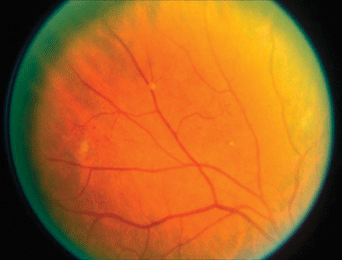
FIGURE 3-4. IRMA, standard photo 8A. (Courtesy of University of Wisconsin, Fundus Reading Center and Early Treatment Diabetic Retinopathy Study Research Group.)
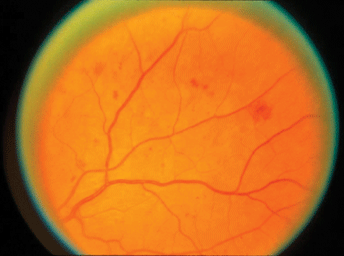
FIGURE 3-5. Cotton-wool spots, standard photo 2A.
(Courtesy of university of Wisconsin, Fundus Reading Center and Early Treatment Diabetic Retinopathy Study Research Group.)
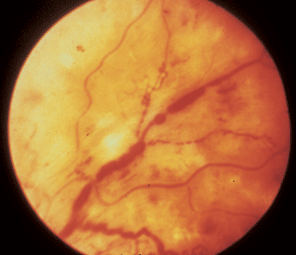
Figure 3-6. Venous beading.
DIABETIC RETINOPATHY VITRECTOMY STUDY
The Diabetic Retinopathy Vitrectomy Study (DRVS) addressed the question of the timing of vitrectomy surgery for the management of PDR.29 Between 1976 and 1980, the DRVS followed 744 eyes of 622 patients with severe PDR using conventional management such as laser photocoagulation. The eligibility criteria were that the patient had had a vitreous hemorrhage within 5 months and visual acuity of 5/200 or less. Patients eligible for the “very severe proliferative retinopathy with useful vision” group had extensive active fibrovascular proliferation and a visual acuity of 10/200 or better. Historically, DRVS was conducted at a time when most surgeons waited for the resolution of a vitreous hemorrhage for at least 1 year before performing vitrectomy.30–35
Of these eyes whose retina had four disc areas of new vessels, vision dropped from 10/30 to 10/50 at baseline to <5/200 at 2 years in 45% of the eyes. In eyes with baseline extramacular traction retinal detachments without active new vessels or vitreous hemorrhages, vision dropped to <5/200 in 14% of the eyes.36
Vitrectomy was needed in 25% of these eyes after 2 years of follow-up due to either new macular detachments or hemorrhage that did not clear after 1 year of follow-up.37
The DRVS defined Type 1 and Type 2 diabetes. Type 1 was defined as patients currently receiving insulin whose diabetes was diagnosed on or before age 20. Type 2 was defined as patients whose diabetes was diagnosed at 40 years or older, regardless of insulin use. An intermediate or mixed group was defined as patients whose diabetes was diagnosed between ages 21 and 39 years.
The DRVS found that there was a decisive advantage in early vitrectomy for Type 1 diabetes as compared with eyes in the control group at the 2-year follow-up visit.37–39 The early treatment group maintained a higher proportion of eyes with 10/20 (36%) or better at the 2-year and 4-year follow-up periods, versus conventional treatment, in Type 1 diabetes.40
Stay updated, free articles. Join our Telegram channel

Full access? Get Clinical Tree


